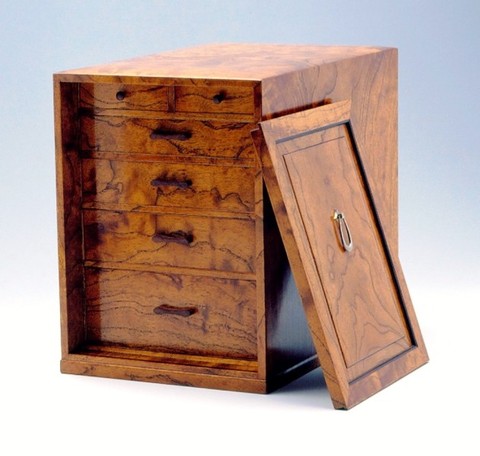
江戸時代、徳川幕府は多くの職人を全国から呼び寄せて、神田・日本橋周辺に、大工町、鍛冶町、紺屋町などの職人町をつくり手工業を発達させました。
江戸時代の中頃には消費生活の発達につれて、大工職の仕事は楢物師(ひものし)、戸障子師、宮殿師などの職業に分かれていきました。その一つが指物師で、現在に続いています。

Many skilled individuals were encouraged to live and work in Edo (Tokyo) by the Shogunate right from the outset of the Edo period (1600-1868), and craft industries developed as a result of the formation of enclaves within the districts of Kanda and Nihonbashi for such specialists as carpenters, smiths, and dyers. The emergence of a consumer society that took place in Japan from about the middle of the Edo period in turn led to a specialization among carpenters, with some producing bentwood goods, others making fine screens and doors, and still others who constructed religious and palace architecture. Fine cabinet makers and joiners also emerged and are still active to this day.
While fine cabinetry and joinery in Kyoto developed as a result of supplying the needs of the Imperial court and the tea ceremony, the style which still characterizes Edo joinery developed by meeting the requirements of the warrior classes, merchants and Kabuki actors resident in Edo. In essence this distinctive Edo style is expressed through sturdy construction and a brevity of form, while avoiding unnecessary ornamentation and maximizing the effects of an attractive grain. Perhaps the best and most highly acclaimed of all the woods used is the so-called shimakuwa, a mulberry from the island of Mikurajima.
The range of goods produced today includes chests, desks, various kinds of stands and shelves. Boxes are also part of a repertoire which is completed by hibachi, items for the tea ceremony and pieces associated with the playing of Japanese music. There are now 23 firms with 39 staff, among whom 9 are government recognized Master Craftsmen perpetuating the reputation of this fine work.